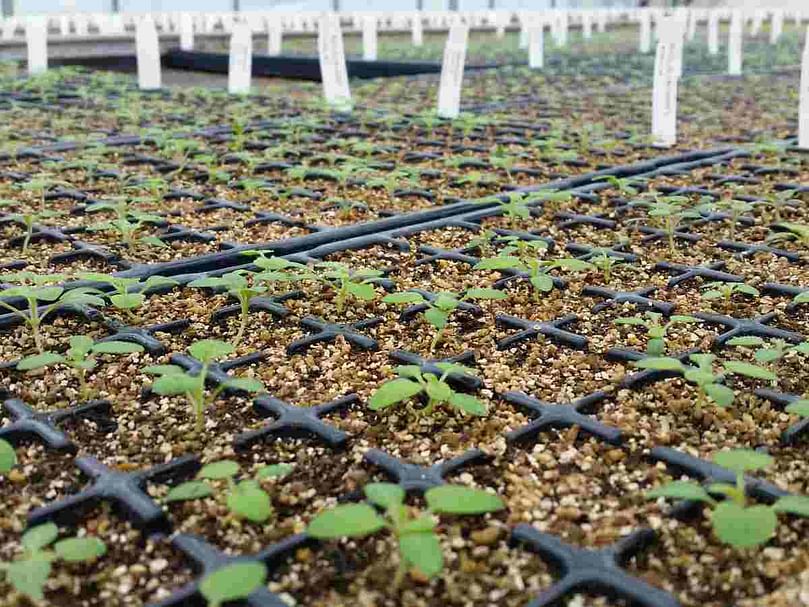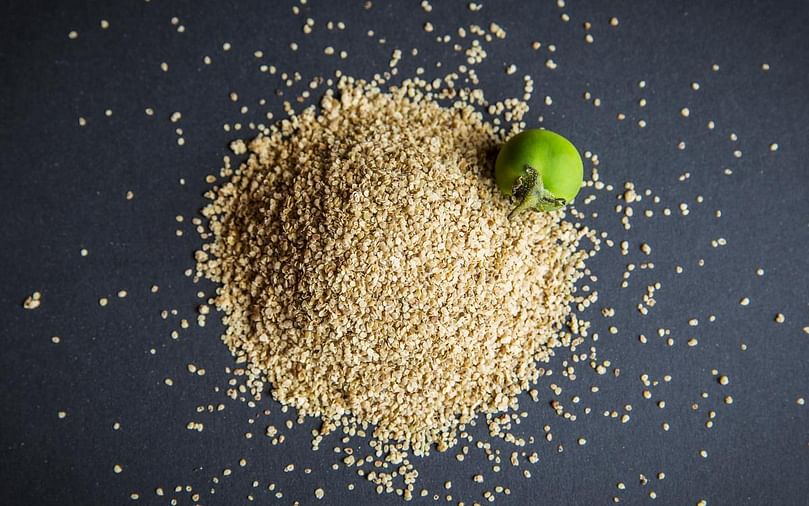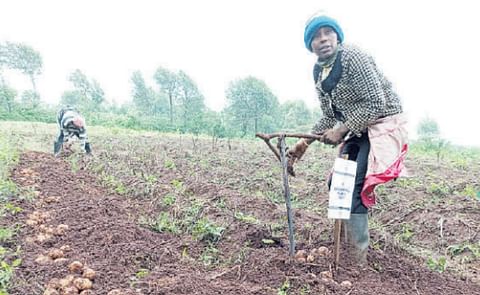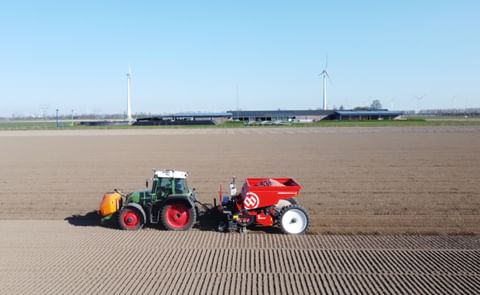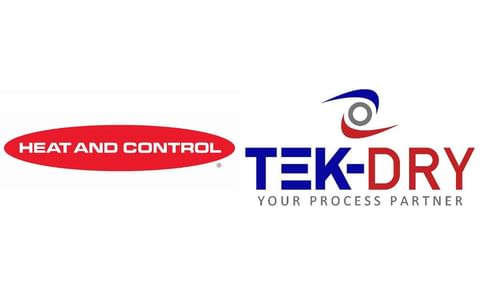Vincent Coolbergen, manager at Royal Wilhelmina Polder Company (KMWP) was pleasantly surprised with the yield of the first large plot: “I could barely believe my eyes when I saw the yield level of the first batches last year.”
First large-scale Solynta Hybrid seed potato trials highly successful
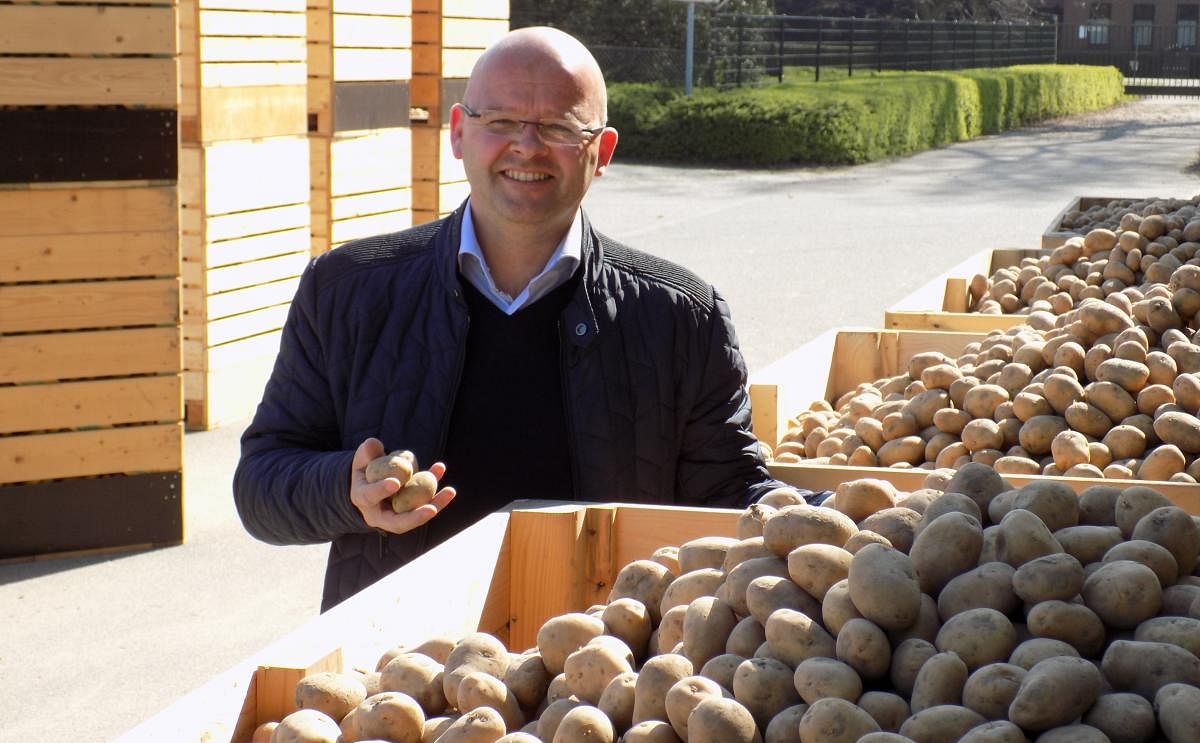
Potato breeder Solynta started a potato revolution nearly ten years ago: to develop and apply new breeding technologies to convert potatoes into a hybrid crop. Years of research went into the development of a hybrid potato.
In 2015, the first experimental hybrids were successfully created: parental lines were crossed in such a way that a hybrid potato was created.
In cooperation with the Royal Wilhelmina Polder Company (KMWP), the first ‘large’ plot was planted last year.
KMWP manager Vincent Coolbergen was immediately pleasantly surprised.
Vincent Coolbergen:
“Although yield was not a goal, some of the hybrids generated the same yield as the regular varieties.”A windfall neither Solynta nor KMWP had counted on, because this is a totally new cultivation method for potatoes. Although it comes with crop management challenges:
Vincent Coolbergen:
“Weed control is a challenge. Currently, soil herbicides are used in seed potato cultivation, which are applied after planting. Spraying soil herbicides on plants is not a good idea, to put it mildly.”So, weed control has to be adjusted.
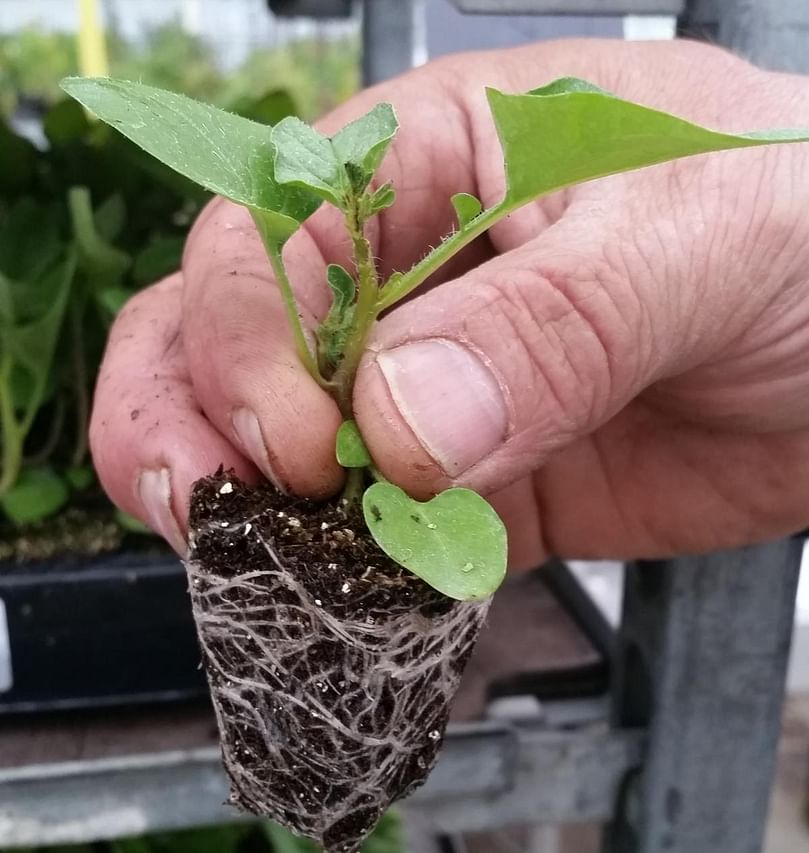
Potato plants of this size are planted in an already tilled ridge
Planting potato plantlets is another novelty that demands new crop management.
Vincent Coolbergen:
“Once the planting is done, this crop barely differs from the regular potato crop.”
“But it is the planting that provides the challenge. For this kind of hybrid plant, you need good weather. They have to be planted under the right weather conditions. Hybrid seed potatoes are vulnerable to night frost, so you have to plant them later.”
“Initial growth is also slower, so timing is extremely important.”
Introducing Resistance without Genetic Modification
Michiel de Vries (Agronomist at Solynta) concurs with Coolbergen’s conclusions.
Michiel de Vries:
“The cultivation process is still being developed. We are seeing a lot of commonalities with other outdoor crops in terms of timing and cultivation support.”For now, Solynta is primarily focusing on disease resistant potato plants.
“Cabbage and celeriac are also first grown at a nursery and then arrive at the growers’ as seedlings.”
“That is actually what we are doing with the (hardened-off) potato plants now too.”
Michiel de Vries:
“This year, we are growing experimental hybrids with a double resistance to Phytophthora for the first time. That resistance was bred into it in a natural way.”
“We believe a lot of growers will really benefit from these products. You don’t need to spray for Phytophthora anymore. That is a big step, of course: from spraying, say, twelve to twenty times to not spraying at all. Many growers say, ‘just to be on the safe side, I’m still going to spray a few times’, but with resistant hybrids, they don’t need to do that anymore.”
“It made us a bit nervous at first too. When our first resistant hybrids were growing in a test field, we were watching them with bated breath.”
“But they stayed healthy and green and kept growing.”
Royal Wilhelmina Polder Company (KMWP)
The KMWP is a 1,900 ha. farm, of which about 1,400 ha. are farmed by the company. The company appoints a manager to take care of the farm, supported by a team of employees. Coolbergen asserts that it is not a test farm, but that Solynta was looking for someone to bring hybrid seed potatoes from the lab into the field.
Vincent Coolbergen:
“And that makes it interesting for us, because we identify as an ‘early adopter’ and this project fits in very well with that vision.”In addition to his work as the manager of KMWP, Coolbergen also has a background in agriculture. He understands like no other that seed potatoes growers are following the developments with some hesitation.
Vincent Coolbergen:
“That makes sense, because it is about your livelihood. Is growing from tubers going to become obsolete if this works? I don’t think that is going to happen for a while yet, and if this hybrid really takes off, it will be able to easily live side by side with traditionally grown seed potatoes.”
“It is not a threat, but a hundred percent opportunity. It is a question of rethinking. If, as a seed potato grower, you are getting a very high yield of tubers per hectare, with leadership at cost. What comes out of the hybrid tube will have to strongly compete with that. You can look at it another way too: we have to do even better. The market will regulate it.”
“This is going to shake up the market, because potato profits have been declining rather than rising in the past few years. I think it is actually good that the traditional breeding method will be put under some pressure, now that the market is catching up to them with initiatives like hybrid seed potatoes.”
Social Impact
At Solynta they are also hearing from worried growers.
Vincent Coolbergen:
“Together with a number of institutes, including the renowned Rathenau Institute (which is used as an advisory body by the government), we are looking at the social impact of this innovation: how does this change the chain and is this a desirable change?”
“It is not our aim to help all seed potato growers get rid of their livelihood. On the contrary; we just want to add value to the potato chain. We are certainly seeing many opportunities for seed potatoes, particularly in North-western Europe: a lot of high-quality starting material from tubers will still be needed in the future.”
Crop Optimisation
According to Coolbergen, there are no crop-technical advantages.
Vincent Coolbergen:
“In principle, hybrid seedlings as a crop are more difficult in the beginning, so the advantages are about being able to cross in disease-resistances faster, without diminishing the yield.”Are these conclusions already leading for the future perspective of this new crop?
“It is really about two stories: you can grow potatoes from seed. That is a story and I personally see that more as a development for the distant future. The sector is not ready for that yet, but it is going to happen, I am convinced of that.”
“The second development is in the opportunities to use hybrids to cross in new traits and that is what is most interesting to me. New trait development can be very fast. If there are better varieties, then there is equal market value. That will not be a threat, but an extra opportunity.”
“When you look at other crops you can see that the revenues went up when they switched to hybrids. In that sense, it is not new or complicated, but it is totally new for potatoes. Look at sugar beets, for example: the revenues there also went up when the hybrids were introduced.”
Vincent Coolbergen:
The answer to that includes two elements: we are familiar with experiences with hybrids in other crops, if we extend that to potatoes, then that is very promising.”
“And the second element: if the start year is so successful, even though a lot of development is still required. I could barely believe my eyes when I saw the yield level of the first batches last year.”
“For some of the test hybrids, the yield levels were equal to or greater than the market average achieved by regular seed potato growers in 2016.”
“That makes me think it is going well.”
Costs and Benefits
Prices are not being discussed yet, because, according to Coolbergen, that is not yet relevant.
Vincent Coolbergen:
“What will the pricing look like in the future? There is only one possible answer to that question: the competition is the regular potato seed grower.”Will the cost/benefit ratio cause the introduction of hybrid seed potatoes to be delayed?
“Eventually, you automatically end up with a system that shows if it is viable. Suppose the purchase of the starting material is x percent more, then still a net profit has be made, plus an extra 10%, because otherwise, no one will dare to take that step.”
Vincent Coolbergen:
“It is not up to me to provide any timelines, but as the manager of KMWP and as a farmer, I expect that we will see traits in hybrid seed potatoes that we are currently diligently looking for. What aspects still remains to be seen, but I am thinking of decreased susceptibility to viruses, bacteria, maybe aphids will no longer even want to land on the potatoes.”
“Especially resistance to Phytophthora and Alternaria also offers opportunities. If you want to conquer a place on the market, you have to score those types of points: problems that come with high costs in crop protection. If you can save on those expenses, then you already have your first profit. Not only financial, but also in terms of environmental impact.”
Mechanisation
In terms of mechanisation, there are also still some steps to be taken, Coolbergen tells us.
Vincent Coolbergen:
“There is not a single machine constructor that is doing this, so far, but the market will take care of that, because when the companies Miedema, AVR and Grimme hear about this, they will certainly pick it up right away and the market will do the rest.”De Vries acknowledges that a number of steps will need to be taken before that time.
“The biggest challenge for us, as the agricultural sector, is to become skilled at producing these crops. Some improvements still need to be made.”
“I think it is difficult and risky, in part because the limitation is that you can’t make it very big, because of lack of capacity. That is not the case as yet, but if Solynta continues like this, then we may be ready for large acreages within five years. And only then will it become very interesting for the market.”
Michiel de Vries:
“Particularly in terms of trait development, we still need to take some steps: we have to breed competing varieties. In addition, development of crop management strategies needs to be done to optimise the start of the crop.”
“Our progress is promising enough that we count on bringing a full-fledged variety to the market by 2020.”
A Matter of Time
In practice, the daily issues often trump the long term perspectives. Coolbergen warns us not to miss this promising opportunity.
Vincent Coolbergen:
Why do we have seed potato crops? Because there are consumption growers that need starting material. This may be a very plain rationale, but you have to start at the end of the chain to understand why we are doing this.”
“If there are growers that are asking for more resistant seed potatoes, and hybrids can offer that. Then there will always be someone who’s interested to supply that. As a grower, you could say: I’m not going to do that. Farmers are generally very good at that.”
“But if you think that it will stop, then one day you will no longer be a seed potato grower. If there is a demand for hybrid seed potatoes, and that time is coming, then it is simply going to happen, period!”
Like to receive news like this by email? Join and Subscribe!
NEW! Join Our BlueSky Channel for regular updates!
Highlighted Company
Sponsored Content
Sponsored Content
Sponsored Content
Sponsored Content
Sponsored Content

